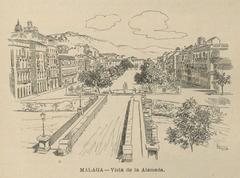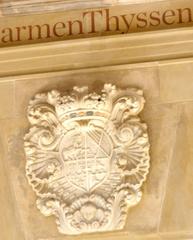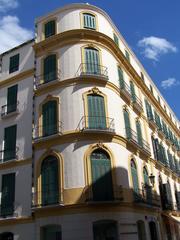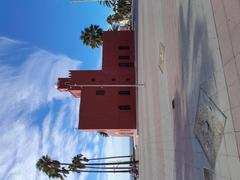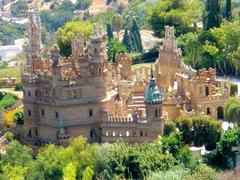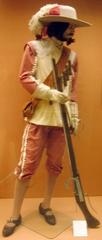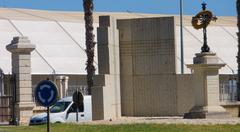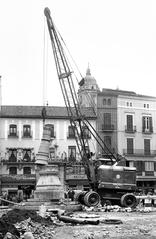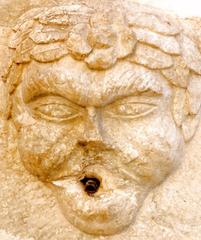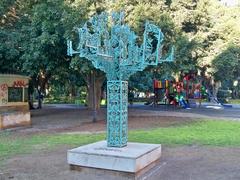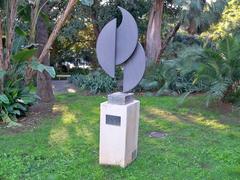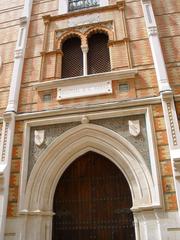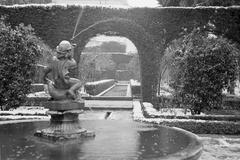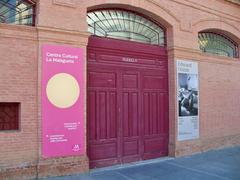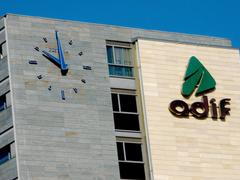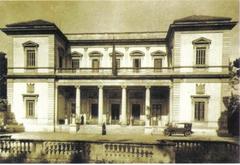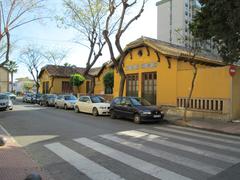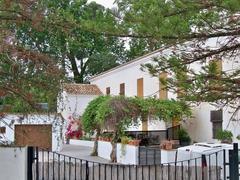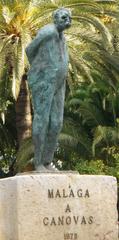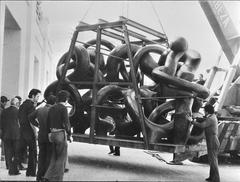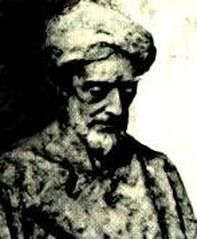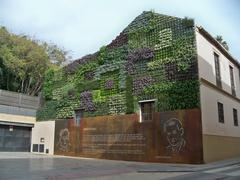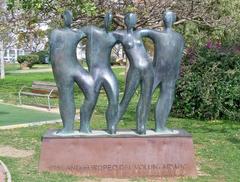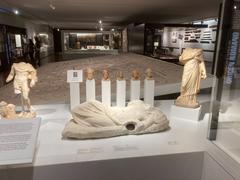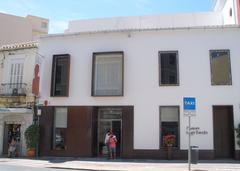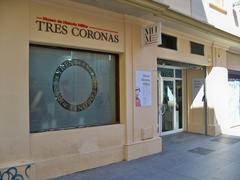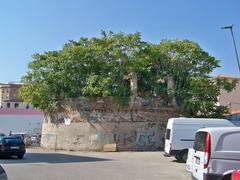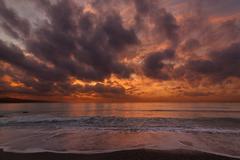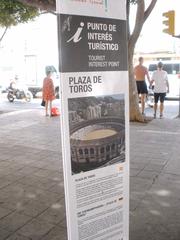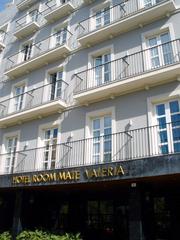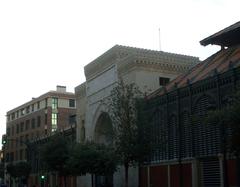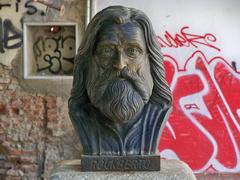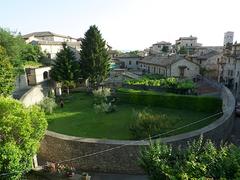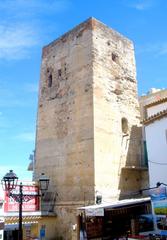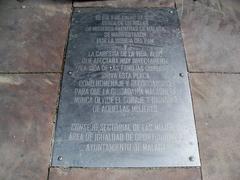Visiting the Monument to Liberty in Málaga, Spain: Complete Guide with Tickets, Hours, and Tips
Date: 14/06/2025
Introduction: A Symbol of Freedom and Málaga’s Historical Heart
Located in the vibrant Plaza de la Merced, the Monument to Liberty—also known as the Monumento a Torrijos—stands as a powerful memorial to Spain’s 19th-century struggle for constitutional freedom and liberal values. This neoclassical obelisk honors General José María Torrijos y Uriarte and his 48 companions, who were executed in 1831 after a failed attempt to restore constitutional monarchy during King Ferdinand VII’s absolutist reign. Their sacrifice became a rallying point for democratic ideals in Spain.
Today, the monument is more than an architectural landmark; it is a living testament to Málaga’s enduring commitment to democracy, civil rights, and national identity. The monument’s central location in Plaza de la Merced, surrounded by jacaranda trees and historic sites, makes it a compelling destination for both history buffs and casual visitors. This comprehensive guide provides detailed visitor information—including visiting hours, ticketing, accessibility, travel tips, nearby attractions, and event highlights—to ensure you make the most of your visit.
For official updates, see Málaga Tourism Official Site and Explorial on Plaza de la Merced.
Contents
- Introduction
- Historical Background & Cultural Significance
- Location and Setting
- Monument Description and Artistic Features
- Symbolism and National Identity
- Visitor Information (Hours, Tickets, Accessibility)
- Getting There & Travel Tips
- Special Events & Annual Commemorations
- Nearby Attractions & Suggested Itineraries
- Practical Tips (Safety, Amenities, Customs)
- Photography & Visual Media
- FAQs
- Conclusion & Call to Action
- References
Historical Background & Cultural Significance
The Monument to Liberty is a cornerstone of Málaga’s historical landscape. Designed by Rafael Mitjana y Ardison and inaugurated in 1843, it commemorates General Torrijos and his companions, whose execution on December 11, 1831, marked a defining moment in Spain’s path toward constitutional governance (The Travel Blogs). The monument’s inscriptions and orientation toward San Andrés beach (the execution site) ensure the memory of these martyrs remains alive in the city’s collective consciousness.
This site is not only a marker of the city’s political evolution but has also served as a focal point for rallies, protests, and annual commemorations. Its presence underscores the city’s dedication to liberty and the ongoing relevance of these values in contemporary Spain (Explorial).
Location and Setting
Situated in Plaza de la Merced, one of Málaga’s most dynamic squares, the monument is enveloped by the city’s lively urban rhythm. The plaza is shaded by jacaranda trees that create a purple canopy each spring, enhancing its beauty. This central location is within walking distance of major historical sites such as the Alcazaba fortress, the Roman Theatre, Picasso’s Birthplace Museum, and Málaga Cathedral (Cestee).
Monument Description and Artistic Features
Structure and Dimensions
- Height: Approximately 11 meters (36 feet)
- Materials: White marble and granite
- Design: Neoclassical obelisk on a square pedestal, surrounded by an iron fence
- Crypt: Contains the remains of Torrijos and his companions, transferred here in 1842, accessible only during special commemorative events
Artistic Details
- Inscriptions: The pedestal bears Spanish inscriptions honoring the martyrs’ sacrifice for liberty and the constitution
- Plaques: Bronze plaques list the names of the fallen
- Surroundings: The monument sits within a small, gated garden open to the public
Artistic Influences
The monument’s neoclassical style, with its symmetry and classical motifs, reflects early 19th-century European trends and invokes ideals of reason, order, and justice (Academia.edu).
Symbolism and National Identity
Beyond its function as a mausoleum, the monument is a political statement celebrating liberty and resistance to tyranny. It has become a symbol of Málaga’s role in shaping Spanish national identity, commemorating the sacrifices of those who fought for civil rights and constitutional government. The neoclassical design also evokes republican virtues such as sacrifice and moral clarity.
Visitor Information
Visiting Hours and Tickets
- Hours: Open 24/7 (outdoor public site)
- Tickets: Free, no reservation required
Accessibility
- Wheelchair Accessible: Yes, with paved walkways and accessible entrances
- Amenities: Benches, nearby cafés, public restrooms in adjacent establishments
- Guide Dogs: Welcome
Best Times to Visit
- Morning: Quieter atmosphere, ideal for photography
- Late Afternoon/Evening: Vibrant local life, especially during festivals
- Jacaranda Season (May–June): Stunning purple blooms
Getting There & Travel Tips
- Location: Plaza de la Merced, Málaga city center
- On Foot: Easily reachable from most historical landmarks
- Public Transport: Served by several bus lines; Málaga Centro-Alameda train station is a 15-minute walk
- Car: Underground parking available nearby, though limited during peak times
- Travel Tip: Avoid midday summer heat (32–38°C); early morning or evening visits are most comfortable
Special Events & Annual Commemorations
December 11: Torrijos Commemoration
Each year, Málaga honors Torrijos and his companions with floral offerings, speeches, and reenactments at the monument. These public ceremonies highlight the city’s civic pride and connection to its liberal heritage.
Feria de Málaga
During the August Feria, Plaza de la Merced transforms into a festival hub with music, dancing, and traditional Andalusian dress—often with the monument as a dramatic centerpiece (Faraway Worlds).
Cultural Events
Spring and summer bring free concerts, art exhibitions, and public gatherings to the square. The monument is sometimes illuminated for special occasions. For event details, see Songkick Málaga Events.
Nearby Attractions & Suggested Itineraries
- Picasso Birthplace Museum: Located on Plaza de la Merced, offers insight into Picasso’s early years
- Málaga Cathedral: Renowned Renaissance structure with an incomplete tower (Brogan Abroad)
- Alcazaba & Gibralfaro Castle: Moorish fortresses with panoramic views (Wanderlust Chloe)
- Roman Theatre & Atarazanas Market: Both within easy walking distance (Faraway Worlds)
Suggested Itinerary: Start with breakfast at a Plaza de la Merced café, visit the monument, tour Picasso Museum, stroll the historic center, and watch sunset from Gibralfaro Castle.
Practical Tips
Safety and Comfort
- Plaza de la Merced is generally safe, but be mindful of your belongings during crowded events
- The area is well-lit and lively into the evening
Amenities
- Public restrooms in nearby cafés (often require purchase)
- Ample seating and shaded areas
- Free Wi-Fi in parts of the plaza
- Bilingual (Spanish/English) information boards
Local Customs and Etiquette
- Maintain quiet during commemorative ceremonies
- Photography is permitted, but avoid disturbing official events
- During festivals, join in respectfully—local dress and traditions are welcomed
Language
- Most information is available in Spanish and English; basic Spanish phrases are appreciated
Sustainability
- Do not climb on the monument or litter
- Use recycling bins and support local businesses
Photography & Visual Media
- Best Light: Early morning and late afternoon golden hours
- Seasonal Highlights: Jacaranda blooms, festival decorations, and night illuminations
- Alt Tags for Images: “Monument to Liberty Málaga at sunset,” “Monumento a Torrijos during Feria de Málaga”
- Virtual Tours: Available through Málaga’s tourism websites
Frequently Asked Questions (FAQ)
Is there an entrance fee or ticket required?
No, access is free and open 24/7.
Is the site wheelchair accessible?
Yes, with flat, paved surfaces and accessible pathways.
Are guided tours available?
Many city walking tours include the monument as a key stop.
What are the best times to visit?
Early morning and late afternoon for comfort and photography.
How do I reach Plaza de la Merced?
By foot from the city center, or via nearby bus and train stations. Parking is available but limited.
Conclusion & Call to Action
The Monument to Liberty in Málaga stands as a profound symbol of sacrifice, resilience, and Spain’s enduring pursuit of democratic freedoms. Its central location, historical gravitas, and accessibility make it a must-visit for anyone exploring Málaga’s rich heritage. Whether you’re attending a festival, joining a guided tour, or simply reflecting on the city’s history, the monument offers a unique and meaningful experience.
For up-to-date information, expert audio guides, and cultural event listings, download the Audiala app and follow us on social media. Plan your visit and immerse yourself in Málaga’s vibrant history today!
References
- Málaga Tourism Official Site
- Cestee: Plaza de la Merced
- Explorial: Malaga – La Plaza de la Merced
- Faraway Worlds: What to Know Before You Visit Málaga, Spain
- The Travel Blogs: Monuments and Statues in Málaga
- Brogan Abroad: Things to Do Málaga Spain
- Wanderlust Chloe: Málaga Things to Do Tour
- Songkick Málaga Events
